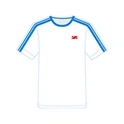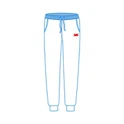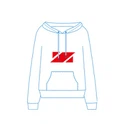What''s the difference between sweatpants and tracksuits?**
**Introduction:
Sweatpants and tracksuits are two popular clothing items worn for comfort and casual purposes. While they share some similarities in terms of style and functionality, they also have distinct features that set them apart. In this article, we will explore the key differences between sweatpants and tracksuits, including their origin, design, material, and usage. So, let''s dive in and unravel the unique characteristics of these garments.
Origin:
Sweatpants and tracksuits have different origins and were initially designed for different purposes.
*Sweatpants:*
Sweatpants, as the name suggests, were primarily designed for athletic activities and exercise. They were first introduced in the early 1920s as comfortable bottoms for athletes to wear during training sessions and to keep warm during outdoor activities. Made of soft and sweat-absorbent fabric, sweatpants were ideal for promoting ease of movement and ventilation while engaging in physical activities.
*Tracksuits:*
Tracksuits, on the other hand, are a more recent development compared to sweatpants. They originated in the 1960s as a sportswear ensemble, consisting of a jacket and matching pants. Tracksuits gained popularity among athletes and individuals involved in track and field events due to their convenience and functionality. The design of tracksuits allowed for easy layering and provided athletes versatility in adapting to different weather conditions.
Design:
The design of sweatpants and tracksuits differs in certain aspects, emphasizing their intended purposes.
*Sweatpants:*
Sweatpants typically feature an elastic waistband with a drawstring, allowing wearers to adjust the fit according to their preference. They are usually loose-fitting, providing ample freedom of movement. Sweatpants are often tapered at the leg opening and may have elasticated cuffs to prevent interference during activities. Some variations of sweatpants also come with pockets, enabling individuals to carry small personal items.
*Tracksuits:*
Tracksuits, as mentioned earlier, consist of a jacket and matching pants. The jacket is typically zippered or features buttons or snaps for closure. It may include a hood for added protection against the elements. The pants usually have an elastic waistband and elasticated cuffs, similar to sweatpants. However, tracksuit pants tend to be looser and wider in the leg compared to sweatpants, allowing for a roomier fit.
Material:
The choice of material for sweatpants and tracksuits plays a significant role in their functionality and comfort.
*Sweatpants:*
Traditionally, sweatpants were made of cotton or a cotton-blend fabric. This fabric is soft, breathable, and highly absorbent, making it suitable for absorbing sweat during physical activities. However, with advancements in textile technology, sweatpants can now be found in various materials like polyester, nylon, and spandex. These materials enhance durability, stretchability, and quick-drying properties.
*Tracksuits:*
Tracksuits are commonly made of synthetic materials such as polyester or nylon. These fabrics offer durability, breathability, and moisture-wicking properties, making tracksuits suitable for intense physical activities. Tracksuits often have a smooth and shiny appearance due to the synthetic fibers used in their production. This texture adds to their distinctive aesthetic appeal.
Usage:
Though sweatpants and tracksuits are both casual and comfortable, their usage differs based on their design features and their association with particular activities.
*Sweatpants:*
Sweatpants are primarily worn for casual activities, lounging at home, or engaging in light exercises like yoga, Pilates, or walking. Their comfortable fit and soft fabric make them ideal for activities that do not involve rigorous movement or physical exertion. However, in recent years, sweatpants have gained popularity as fashionable streetwear, allowing individuals to be both comfortable and stylish.
*Tracksuits:*
Tracksuits are commonly associated with sports and athletic activities. Athletes often wear tracksuits before and after their events to keep their muscles warm and prevent injuries. Tracksuits are also suitable for outdoor activities like jogging, running, and training, where individuals require freedom of movement and protection against the elements. In addition, tracksuits have become a style statement in the fashion industry, with many people incorporating them into their everyday wardrobe.
Conclusion:
In summary, while sweatpants and tracksuits share similarities in terms of comfort and casual styling, their origin, design, material, and usage reveal significant differences. Sweatpants were initially designed for athletic purposes, whereas tracksuits emerged as sportswear ensembles. Sweatpants have a loose fit and are primarily made of cotton or cotton blends, while tracksuits have a roomier fit, often made of synthetic materials. Sweatpants are commonly used for light exercises and lounging, while tracksuits are associated with sports and outdoor activities. By understanding these differences, individuals can make informed choices based on their specific needs and preferences.







